I am trying to obtain an ndarray of points along the boundary of a shape denoted by 1's in the array. I tried using scipy.spatial.ConvexHull but the boundary created by the convex hull did not account for the hole in the middle of the shape (I need a boundary around the hole too). This is the kind of boundary I am trying to create from the array. How can I account for the hole in the shape?
The colored in area is the area that the boundary points should be calculated from.

import numpy as np
from skimage.measure import label, regionprops
import matplotlib.pyplot as plt
from scipy.spatial import Voronoi, voronoi_plot_2d, ConvexHull
arr = np.array([
[1,1,1,1,1,1,0,0,0,1,0],
[1,1,1,1,1,1,0,0,0,1,0],
[1,1,0,0,0,1,1,1,1,1,0],
[1,1,0,1,1,1,1,1,0,0,0],
[1,1,1,1,1,1,0,0,0,0,0],
[0,1,1,1,1,0,0,0,0,0,0],])
coords = []
for x in range(arr.shape[0]):
for y in range(arr.shape[1]):
if arr[x][y] > 0:
tile = [x,y]
coords.append(tile)
# print("tile", tile)
coords = np.array(coords)
# print(coords)
hull = ConvexHull(coords)
plt.plot(coords[:,0], coords[:,1], 'o')
for simplex in hull.simplices:
plt.plot(coords[simplex, 0], coords[simplex, 1], 'k-')
plt.plot(coords[hull.vertices,0], coords[hull.vertices,1], 'r--', lw=2)
plt.plot(coords[hull.vertices[0],0], coords[hull.vertices[0],1], 'ro')
